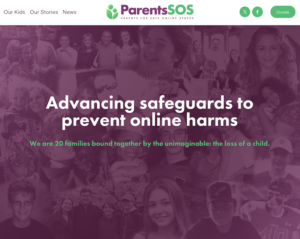For the past 35 years I’ve worked as a pediatric occupational therapist providing a variety of services in schools settings including individualized assessments, staff workshops and playground/gym consultations. During this time, I’ve witnessed dramatic changes in how teachers teach, how students learn, and how government and administrations manage the ‘education process’. While historically books and paper ensured student achievement of printing, reading and numerical literacy by grade 3, and served as a foundation for further advancement in core subjects, schools have tossed them out in favor of screen-based technologies. While the bell curve flattens the performance gap widens, and grade level achievement is no longer the norm. Education governments and school administrations appear more interested in technology’s efficiency and less interested in whether it is even effective, moving forward to increase class size and lay off teachers. Staff and students pressured to ramp up use of education technology has resulted in an explosion of unrestricted entertainment content in schools including video games, porn, social media and bullying. While students and teachers become more addicted to their devices, screen addiction abounds. Significant studies are now showing that screens in schools might be the biggest experimental disaster of epic proportion ever known. 1 in 3 students enter school developmentally delayed, 1 in 4 are obese or overweight, 1 in 6 have a diagnosed mental illness, and 1 in 10 students are on an Individualized Education Plan. Without any consideration given to declining student well being and academic success, schools continue to allow students unrestricted access to entertainment-based technologies within the confines of education technology. This article profiles the myths schools believe which allow them to ignore the decline in student health and learning and proposes initiatives we can launch now to get our education systems back on track.
Myth # 1: the rise in child and youth mental disorders have nothing to do with use of screens in schools. Fact: in homes children aged 6-12 years log in 7.5 hours and teens use 9.0 hours per day of entertainment-based screens with Common Sense Media reporting in 2018 that over half of teens report screen addiction. Whenever a teacher or a student has a screen in their face they are unable to engage in meaningful and nurturing social communication.
Myth # 2: the rise in child and youth physical disorders and poor fitness have nothing to do with use of screens in schools. Fact: allow device use and students sit; prohibit device use and they get up and move around. It’s that simple.
Myth # 3: the rise in child and youth oppositional and aggressive behaviours is not related to screen overuse in schools. Fact: media violence causes aggression. School are reporting escalating issues with student violence toward teachers yet continue to allow unrestricted use of video games. Instead of promoting outside play on challenging playgrounds, teachers either keep them in at recess or expel them. Humans are pack animals and when removed from their pack and isolated, they don’t do well. Co-regulation between humans fosters self-regulation.
Myth # 4: education needs to be like a video game to capture the attention of “new age students.” Video games are linked attention deficit and the World Health Organization recently classified video game addiction as a mental health disorder. Thinking we can educate students using fast paced media content is akin to adding gas to a fire and expecting it to go out. If we want our students to retain and assimilate and apply information (deep learning), teachers need to use teach, not entertain.
Myth #5: students are not using devices for entertainment (video games, social media, porn) while at school, but rather for education purposes. Fact: students spend 97% of their screen time engaged in entertainment content and only 13 min. per day on education content.
Myth # 6: technology is the future and schools need to prepare children for the future. Fact: self-regulation and job-entry literacy are two most salient factors for academic success. Screens promote neither.
Myth # 7: students need these devices to learn as education governments have withdrawn funding of paper and books. Fact: schools can make the choice to re-route funds allocated for technology back toward purchase of traditional teaching modalities; they just need to do it.
Myth # 8: parents need to be able to contact their children and their child’s teacher at any time during the school day. Fact: 80% of parents don’t want their children to have cell phones in schools. Up until 10 years ago parents left messages with the school secretary. It’s the job of schools to ensure student safety and wellbeing. Talking to parents during the day is ruining a child’s chance to be self-sufficient and independent.
Myth # 9: parents are worried about school shooters and would need to know if their child is okay should a school lock down occur. Fact: there are numerous reasons for students to not use their cell phones during an emergency including distraction of user, alerts/rings notify shooter of location of hidden students and jamming of communications for first responders.
Myth # 10: letting students use screens in schools is the only way to get students to come to school; students will transfer to another school that allows cell phone use if restrictions on screens are imposed. Fact: allowing students to stay at home is a parenting issue, not a school issue. If students choose to stay at home to use screen media and parents allow this, then this action constitutes parental neglect requiring involvement of child protection services. Cell phone policies should be made on a district level which would prevent inter-district transfers.
The medical profession is heavily regulated with laws and guidelines to maximize safety and minimize risk to recipients. Medical procedures, therapies and drugs are researched by government and universities to prove efficacy and adhere to best practice standards. Studies are not driven by industry but rather by scientific methods which meet ethical guidelines e.g. free from conflict of interest, replicable, adequate study size. While not perfect, the medical system and people who work within it are held to high standards and discipline. The education system while regulated does not appear to recognize nor act in the best interests of the students it is servicing regarding health and education outcomes. Escalating use of non-evidence based and harmful technology devices and programs in the school system has reached a level where health governments were recently mandated to regulate education government use of technology in schools (Maryland Bill HB 1110). Schools across the globe are using education and entertainment technologies which have little to no benefit and proven harm to student health and well being. While education-based technology has potential ‘promise’, its significant ‘perils’ are not being managed well in school and home settings. Act now to ban all cell phones from schools to create a safe and effective learning environment for all students.





One Response
Parents should be organizing across the country to bring about change. Without reversal of these technology policies when children are in elementary school, we are taking a chance on being able to correct their ability to learn later on. However, given that basic skills need to be acquired before more complex ones, common sense would suggest that without intervention higher education will not end in success for many students.